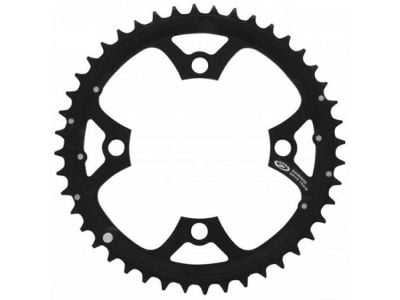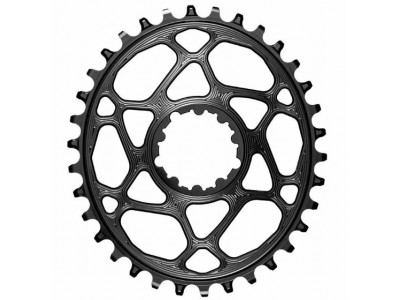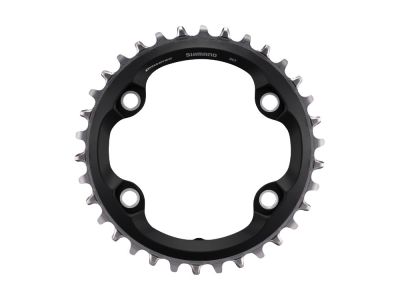Chainrings determine the gear ratios available on the bike. With different sizes of chainrings, you can customize the gear ratio to suit your riding style and terrain. Smaller chainrings provide lower gear ratios for easier climbing, while larger chainrings offer higher gear ratios for higher speed on flat terrain or downhill. When choosing a chainring, do not forget about compatibility with cranks, make sure that the pitch of the screws is identical to the crank.
How to choose a correct chainring?
- Compatibility: Make sure the selected chainring is compatible with your cranks and drivetrain. Check the manufacturer's specifications and compatibility to make sure the converter fits the cranks properly.
- Chainring size: Consider the required gear ratios and the terrain you will be riding. Smaller sprockets (with fewer teeth) provide lighter gears for climbing, while the larger sprockets offer heavier gears for flat terrain and for higher speeds.
- Number of sprockets: Decide whether you want a single-gear, double-gear or triple-gear. Single chainrings are popular for their simplicity and weight savings, but can have a more limited gear range. Dual chainrings offer a wider range of gears, suitable for different terrains. Triple chainrings provide the widest range of gears, but are less widespread in modern drives, due to their weight and more complicated derailleur settings.
- Ride discipline: Consider the specific discipline or type of riding you will be doing. Road, mountain, gravel, and track cycling often have different requirements for gear ratios and chainring construction. Choose a chainring that suits your specific riding discipline.
- Material: Chainrings are usually made of aluminium or steel. Aluminium chainrings are light and stiff, while steel ones are more durable and last longer. When picking a material, consider your priorities in terms of weight savings compared to durability.
- Brand and quality: Research reputable brands that are known for producing high quality chainrings. Look for brands that are characterized by reliability, durability, and good shifting performance such as SRAM, Shimano, absoluteBLACK or Race Face. Read reviews from other riders to learn about converter performance and longevity.
- Budget: Determine your budget and pick a chainring that provides the desired features within your price range. Higher-end transmissions typically offer better shifting performance and longevity, but can be more expensive. Consider your budget and set your priorities.
What standards are there for attaching the converter to the crank?
There are 4 common types of chainring attachment to cranks:
- With 5 screws (older standard)
- With 4 screws (current standard)
- Shimano 11 speed Ultegra and Dura Ace - 4 screws, but with a different layout, spacing
- Direct mount - “Direct mounting” (latest standard) - SRAM and Shimano have different standards
In the first two standards, all screws (either 4 or 5) are located at the same distance from the crank axis and with the same distance between adjacent screws.
What are the most common designs of chainrings?
The design of the chainring is determined by its shape, profile, and tooth structure. Tooth shape can affect shifting performance, chain retention and overall efficiency. Here are some common chainring shapes and designs:
- Standard round: This is the most basic and traditional chainring shape. The teeth are symmetrical and round and offer a consistent engagement with the chain. Standard round chainrings are well suited for normal riding and provide smooth shifting performance.
- Ramps and pegs: Many modern chainrings have strategically placed ramps and pegs on the teeth to make shifting easier. Ramps help guide the chain to the next larger or smaller sprocket when shifting, while pegs help lift the chain while shifting. This design increases the speed and accuracy of shifting.
- Narrow and wide teeth: Narrow and wide teeth are commonly used in single chainrings, especially in mountain biking. They are equipped with an alternation of narrow and wide teeth that correspond to the spacing of the chain. Narrow teeth engage the inner faces of the chain, while wide teeth engage the outer faces. This design improves the chain's grip by reducing its fall on uneven terrain.
- Elliptical or oval: Elliptical or oval chainrings have a non-circular shape with a longer and shorter axis. The idea behind this design is to ensure more efficient energy transfer by optimizing pedal stroke. The oval shape is believed to help smooth out dead spots in pedal engagement and provide more power during the power phase. However, the use of elliptical or oval shifters is a matter of personal preference and may require some adjustment of pedal travel.















































